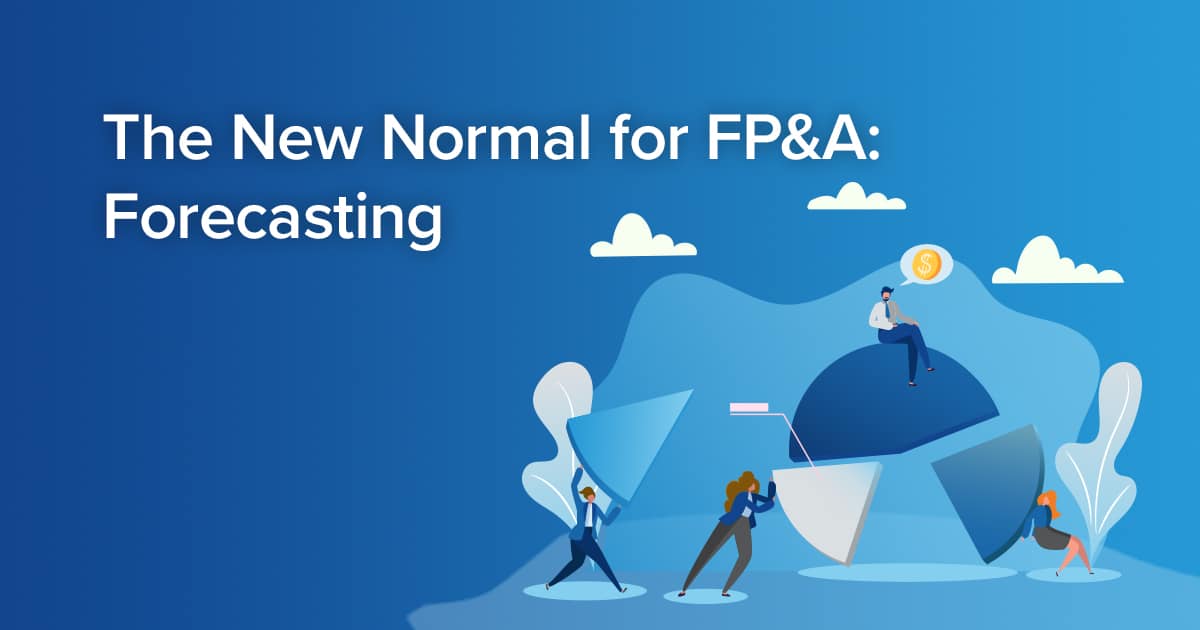
The New Normal for FP&A: Forecasting
For many organizations, the onset of the global health crisis has been like a bank of fog rapidly and unexpectedly engulfing a ship at sea. Suddenly your tried and true navigational skills and processes and the way you have always assessed risks and opportunities has been taken away from you. You must rely on new ways to pilot the ship to a safe port.
The world has changed so much and so quickly that it has vastly impacted our ability to forecast in the current environment. I was shocked to learn recently that one of my most cutting-edge clients, one who has actually been successful in incorporating Artificial Intelligence (AI) into their robust forecasting processes, had basically disconnected their AI capabilities in the present situation. The reason was simple, the model and forecast were no longer providing useful insight and foresight to the organization.
This is just another example of a quote that I often reference by the famous British statistician George Box, “All models/forecasts are wrong, some are useful.”
Because AI learns from historical patterns and behaviors, the models the AI was leveraging were no longer applicable in our current environment. The trends and behaviors we were able to model based on the past twenty years of data and information provided no insight into what may happen over the next one, two, or six months. In other words, the data and algorithms that were fueling the AI-enhanced models to produce actionable insights became useless.
The ability to provide useful forecasts to the C-suite and other business partners relies on adjusting how we acquire data and information that empowers FP&A teams to create knowledge that translates into those elusive faster, better, smarter business decisions.
Going forward, we will have to be more collaborative in our data acquisition process. FP&A teams need to leverage their business partnering skills and relationships in order to extract better and more useful data and information from the organization and the external environment. In this period of incredibly high VUCA (Volatility, Uncertainly, Complexity, Ambiguity), it is critical to produce a range of forecasts and not just a single view of the world.
In my experience, I have found four options to be a good target number. More than four tends to get confusing, while only having three runs the danger of people focusing on the most plausible forecast and disregarding the other two.
FP&A teams need to be more flexible in the time horizons they forecast for. Understanding the different implications and options for each time period is key to leveraging the forecast’s ability to adapt to a shifting reality. The importance of FP&A teams being able to communicate the potential impacts of the forecasts can’t be understated. Clear and concise communication will help to instill confidence and provide clarity.
The frequency of reporting has also been impacted. In the BC (Before-Covid) times, a monthly forecast may have been seen as not merely adequate, but actually leading-edge. Now that same forecast may be asked for on a weekly or even daily basis. Even if we have the ability to re-forecast on a daily basis, what amount of resources (people, time, etc.) are being consumed to do so?
For example, if that forecast takes four hours to produce, doing it once a month caused no strain on the system. A process that takes four hours once-a-month seems quite de minimiis. But to run that same four-hour process on a daily basis, consumes almost half of every day. Obviously, that is unsustainable.
Luckily, we have technologies available to us today that can dramatically reduce the time needed to refresh our forecasts and models. It’s no longer a matter of “Can we do it?”- it’s now a matter of “Are we willing” to invest in our technology, our people and our processes? It may be necessary in order to produce the insights and foresights needed not just to survive in the “New Normal” but to position our organizations to thrive as we enter the “New New Normal”.
I view the current world we are operating in as similar to military conflict. Think about World War II. When the war started, biplanes were being used and by the end of the war we were flying jets. Just because the war was over doesn’t mean a return to using biplanes made sense. Maybe we don’t need the ultimate fighter jet, but we can leverage existing technology and knowledge that we acquired and apply it to everyday life – the genesis of commercial jet air travel.


